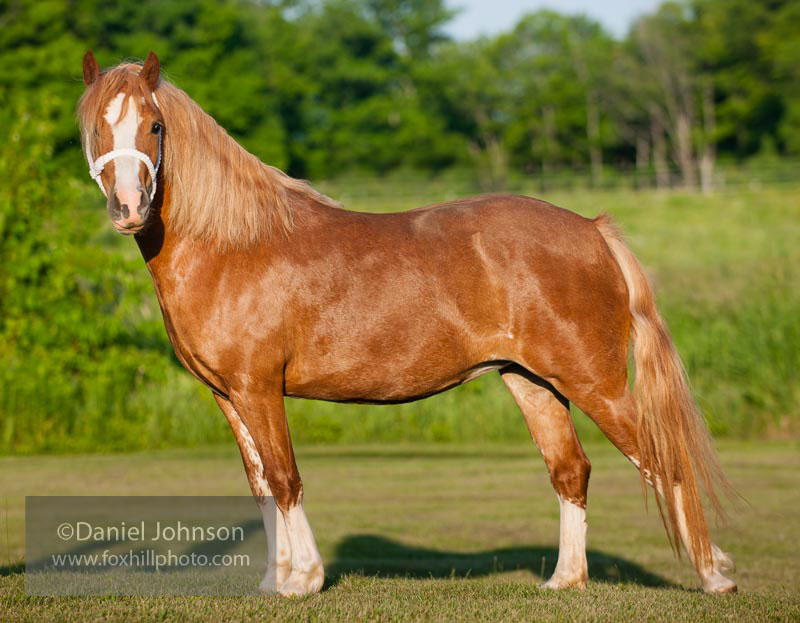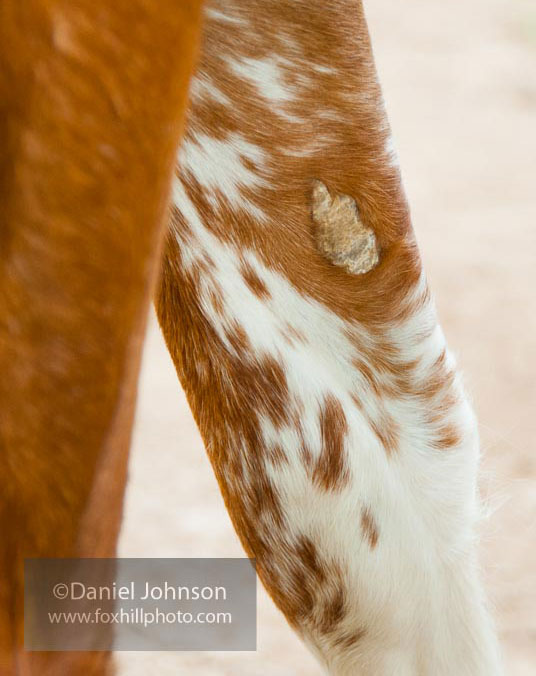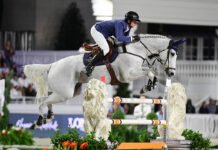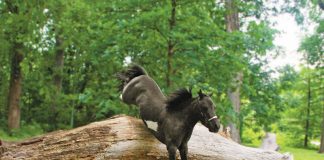
In the olden days, we had two catch-all terms for horses with extensive white markings: piebald and skewbald. Piebald was used to describe horses with a black coat and white markings; skewbald was for any other color and white.
So, what is the sabino pattern?
The sabino pattern is distinctly different from other coat patterns such as frame overo or tobiano, and it’s characterized by white markings that have specks and flecks. Jagged-edged white stockings, flecking on the flanks, blazes with white spots on the lips and chin—all of these are characteristic of the sabino pattern. Other hallmarks of sabino can include minor roaning and belly spots. Generally speaking, sabinos tend to have more minimally expressed white markings than tobianos, splashed whites, etc., but maximally expressed sabinos may exhibit large patches of white on the body. These still generally exhibit the flecking, roaning, and speckling that we come to expect from sabinos.
Research has shown that horses with two copies of the sabino gene (in other words, horses that are homozygous sabino) have more extensive white markings than horses with only one copy of the sabino gene (a heterozygous sabino).

Is sabino the same as roan?
No, although it shares some of the same visual characteristics of roaning, sabino is completely separate from the roan gene. So next time you see a horse that’s advertised as a “chestnut roan” that has lots of white markings and body speckling but has a head that isn’t darker than the body—it’s likely a sabino with roaning, not a chestnut roan.
On the other hand, just because a horse has two hind stockings doesn’t mean he’s automatically sabino. Some people assume that white markings of any type equal sabino, but that’s simply not the case.
Where can I get my horse tested?
You don’t have to sit and wonder whether your horse has the sabino pattern—you can find out by having him tested. Genetic testing laboratories can test a hair sample from your horse and determine whether or not the Sabino 1 gene is present. The University of California-Davis Veterinary Genetics Laboratory can perform the test, as can Animal Genetics, Inc. The price for the sabino test runs $25 at each laboratory.
But remember, the sabino test is still relatively new. Some horses in certain breeds may test negative for the Sabino 1 pattern while still exhibiting all of the hallmark characteristics of the sabino pattern. There’s still a lot we don’t know about the intricacies of the sabino pattern, but we’ll undoubtedly learn more as research progresses, and the Sabino 1 test checks only for one specific gene mutation, whereas there may be multiple types of sabino genes.
Liked this article? Here’s more info on horse coat colors and patterns:
An Introduction to Equine Color Genetics
The Difference Between Paint and Pinto
Samantha Johnson is a freelance writer and the author of several books, including The Field Guide to Horses, (Voyageur Press, 2009). She raises Welsh Mountain Ponies in northern Wisconsin and is a certified horse show judge. Follow her on Twitter: @miraclewelsh.







great info
One of my horses has Sabino markings under her chin and neck and some on her belly.
can you have a sabino horse without white legs?